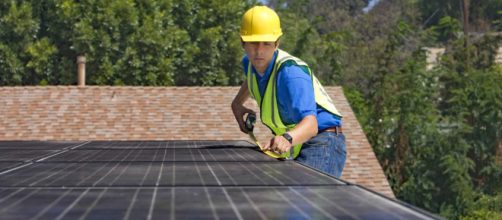California is poised to go green in a big way. The state has already led the way in renewable energy for years, being the #1 producer of solar power among U.S. states. In 2020, the outlook for solar will become even more radiant as California moves to make all residential construction solar equipped beginning in 2020. The benefits of this change to California's building codes are numerous.
Carbon emissions will be reduced by a great deal, and the investment of solar will pay for itself over time. The switch to solar on all new homes is part of California's larger energy strategy that is outlined by the California Renewables Portfolio Standard (RPS).
Established in 2002 under Senate Bill 1078, the RPS intends to make 50% of all energy production in California come from clean, renewable sources such as wind and solar by the year 2030.
Solar Energy can reduce strain on old energy grids
Some of the benefits are obvious, but an often overlooked aspect of grid-tied solar homes is the degree to which they relieve overburdened electrical grids. When a home has rooftop solar panels, it produces electricity that powers the appliances of that home, which means the grid doesn't have to. With an ever-expanding population driving new construction, and strapped budgets that cannot afford to rebuild an old power grid being strained to its limits, rooftop solar is welcomed not just by environmentalists, but even by some who profit from coal and oil burning methods of electricity production.
Prominent Californians chime in
Earlier this month, the California Energy Commission announced the change in a press release. In addition to making solar mandatory on residential construction, the new law also sets new standards for updated thermal envelopes, indoor ventilation requirements, and nonresidential lighting requirements. Some California Republicans are not happy about the new rules, bemoaning the state's already high cost of housing. State Assemblyman Brian Dahl said "The state's housing crisis is real.
California's affordability problem is making it more and more difficult for people to afford to live here." Governor Jerry Brown and other California lawmakers hope to set a precedent for other states to follow.
The new changes to California's building codes are widely seen as a bold, sweeping move toward solar. "This is massive,” said Morten Lund, chair of an energy storage initiative at law firm Stoel Rives LLP. “Essentially, this could turn residential solar into an appliance, like a water heater. There has always been a certain inevitability about that outcome, but this is moving faster than most of us thought likely.”


